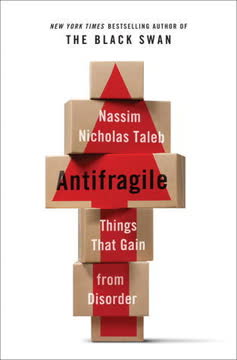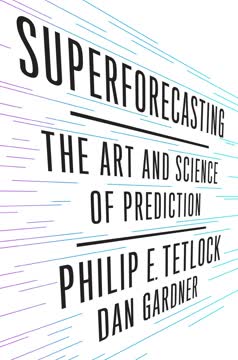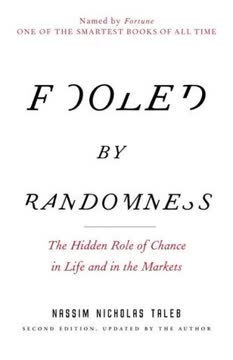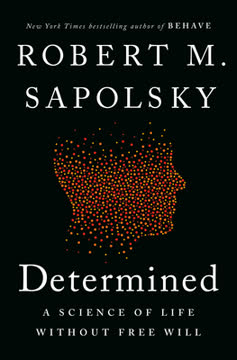つの重要なポイント
1. ノイズ:人間の判断における隠れた変動性
判断があるところには必ずノイズがあり、それは思っている以上に多い。
ノイズの定義。 ノイズとは、本来同一であるべき判断における不要な変動性のことを指す。同じ情報を与えられた異なる専門家が異なる結論に達する場合に発生する。この変動性はしばしば目に見えず、過小評価されがちだが、以下のようなさまざまな分野で重大な影響を及ぼす:
- 医療:同じ患者に対して異なる診断を下す医師
- 刑事司法:類似の犯罪に対して大きく異なる判決を下す裁判官
- ビジネス:同じリスクに対して異なる保険料を設定する引受人
ノイズの影響。 ノイズの存在は、不公平さ、一貫性の欠如、そして意思決定プロセスにおける高コストなエラーを引き起こす。バイアスとは異なり、ノイズは特定の方向に系統的なエラーを引き起こすのではなく、判断にランダムなばらつきを生じさせる。このランダム性は、バイアスと同様に、あるいはそれ以上に有害である可能性がある。なぜなら:
- 専門的な判断の信頼性を損なう
- 類似のケースに対する不平等な扱いをもたらす
- ビジネスにおける重大な財務損失を引き起こす可能性がある
2. バイアスとノイズ:エラーの二つの異なる要素
バイアスとノイズ—系統的な偏りとランダムなばらつき—はエラーの異なる要素である。
エラーの理解。 判断におけるエラーは、バイアスとノイズの二つの要素から成り立っている。両者は異なる方法で不正確さに寄与する:
- バイアス:目標からの平均的なエラーまたは系統的な偏り
- ノイズ:平均を中心とした判断のばらつき
エラーの方程式。 バイアスとノイズが全体のエラーを決定する関係は、数学的に次のように表現できる:
総エラー = バイアス² + ノイズ²
この方程式は次のことを示している:
- バイアスまたはノイズのいずれかを減らすことで精度が向上する
- 多くの場合、ノイズはバイアスよりもエラーに多く寄与する
- エラーを減らすための努力は、両方の要素に対処する必要がある
3. さまざまな分野におけるノイズの普遍的な存在
システムノイズは深刻な問題であり、数億ドルのコストがかかる。
広範な発生。 ノイズは特定の分野に限定されず、さまざまな分野や職業に広く存在する。例としては:
- 医療:診断、治療の推奨、予後の変動性
- 法律:判決、保釈決定、亡命承認の一貫性の欠如
- ビジネス:採用決定、業績評価、財務予測の違い
- 政府:政策実施や規制決定のばらつき
隠れたコスト。 ノイズの財務的および社会的コストはしばしば過小評価されるか、完全に見過ごされることが多い。これらのコストは次のように現れる:
- 資源配分の非効率性
- 個人の不公平な扱い
- 公共機関への信頼の低下
- 機会の喪失と最適でない決定
4. 組織におけるノイズの測定と監査
判断におけるエラーを理解するためには、バイアスとノイズの両方を理解する必要がある。
ノイズ監査。 ノイズ監査は、組織や意思決定システム内のノイズのレベルを測定するための体系的なアプローチである。このプロセスは通常、次の手順を含む:
- 複数の判断者に同じケースやシナリオを提示する
- 彼らの独立した判断を収集する
- これらの判断の変動性を分析する
ノイズの種類。 ノイズ監査は、さまざまな種類のノイズを明らかにすることができる:
- レベルノイズ:個人間の判断レベルの一貫した違い
- パターンノイズ:個々のケースの特徴に対する反応の違い
- オケージョンノイズ:同じケースに対する個人の判断の時間的な変動性
監査の利点。 ノイズ監査を実施することで:
- 組織内のノイズの程度に対する認識が高まる
- 高いノイズレベルに陥りやすい特定の領域やプロセスを特定する
- ノイズ削減努力の効果を測定するための基準を提供する
5. ノイズの背後にある心理学:なぜ発生し、持続するのか
判断はフリースローのようなもので、どれだけ正確に繰り返そうとしても、完全に同じにはならない。
認知的要因。 ノイズの生成と持続に寄与するいくつかの心理的メカニズムがある:
- 過度の一貫性:過度に一貫した印象を形成する傾向
- 確証バイアス:初期の印象を支持する情報を求める傾向
- 利用可能性バイアス:容易に思い出せる情報を過大評価する傾向
- アンカリング:無関係な初期情報に影響される傾向
合意の幻想。 人々は他者が自分の判断に同意する程度を過大評価することが多い。この幻想は次のことに起因する:
- 代替の視点を想像する難しさ
- 自分の見解を確認する傾向
- 判断の正確性に関する定期的なフィードバックの欠如
客観的無知。 多くの状況の本質的な予測不可能性がノイズに寄与する。人々は自分の不確実性のレベルを過小評価しがちで、それが次のことを引き起こす:
- 予測に対する過信
- 未知の要因を考慮しない
- 判断におけるスキルと運の区別の難しさ
6. 意思決定の衛生:ノイズを減らし判断を改善する戦略
意思決定の衛生は、エラーが何であるかを知らなくてもそれを防ぐ。
意思決定の衛生の原則。 ノイズを減らし判断の質を向上させるために、組織は次のような戦略を実施できる:
- 判断において個人の表現よりも正確さを重視する
- 外部の視点を取り入れ、統計的に考える
- 複雑な判断を独立したタスクに分解する
- 早まった直感に抵抗する
- グループディスカッションの前に独立した判断を得る
- 可能な限り相対的な判断を使用する
具体的な手法。 意思決定の衛生を実施するために使用できるさまざまな方法がある:
- ガイドラインとチェックリスト:意思決定への構造化されたアプローチを提供する
- 仲介評価プロトコル:複雑な決定を個別の評価に分解する
- 複数の独立した判断の集約:群衆の知恵を活用する
- アルゴリズムの校正された使用:データ駆動の洞察で人間の判断を補完する
抵抗の克服。 意思決定の衛生を実施する際には、次のような抵抗に直面することが多い:
- 直感的判断の優位性への信念
- 自律性の喪失に対する不快感
- ノイズの普及と影響の過小評価
7. 規則と基準のバランス:最適なノイズ削減の追求
規則は生活を簡素化し、ノイズを減らす。しかし、基準は状況の特性に応じて調整することを可能にする。
規則対基準。 規則と基準の選択は、ノイズ削減における基本的なトレードオフを表している:
- 規則:裁量を最小限に抑える正確で柔軟性のないガイドライン
- 基準:ケースバイケースで解釈可能な一般的な原則
考慮事項。 規則と基準の選択において、組織は次の点を考慮すべきである:
- 意思決定のコスト:規則は通常、適用にかかる労力が少ない
- エラーのコスト:基準は独自の状況により適した対応を可能にする
- 一貫性の必要性:規則は統一性を促進するが、適応性を犠牲にする可能性がある
- 分野の複雑さ:基準は非常に変動する状況により適している可能性がある
最適なノイズ。 目標はすべてのノイズを排除することではなく、次のバランスを見つけることである:
- 判断の有害な変動性を減らす
- 独自の状況に対応する柔軟性を維持する
- 人間の尊厳と公平な扱いの感覚を保つ
- 時間とともに価値観や実践の進化を許容する
最終更新日:
FAQ
What's Noise: A Flaw in Human Judgment about?
- Focus on Judgment Errors: The book explores the concept of noise, which is unwanted variability in judgments, and its impact on decision-making across fields like law, medicine, and business.
- Bias vs. Noise: It distinguishes between bias, a systematic error, and noise, which is random variability in judgments that should be identical.
- Real-World Examples: The authors provide numerous examples to illustrate how noise affects decision-making processes and emphasize the need for awareness and reduction of noise.
Why should I read Noise: A Flaw in Human Judgment?
- Improve Decision-Making: The book offers insights into how understanding noise can lead to better judgments in both personal and professional contexts.
- Evidence-Based Approach: It draws on extensive research and real-world case studies, making the content credible and applicable.
- Practical Applications: The book provides actionable advice and methods for reducing noise, making it a valuable resource for professionals across different fields.
What are the key takeaways of Noise: A Flaw in Human Judgment?
- Distinction Between Bias and Noise: Understanding the difference between systematic bias and random noise is crucial for improving judgment accuracy.
- Noise Audits: The authors introduce noise audits as a method for measuring variability in judgments within organizations.
- Importance of Algorithms: Simple algorithms often outperform human judgment due to their lack of noise, challenging the belief in human intuition's superiority.
How does Noise: A Flaw in Human Judgment differentiate between bias and noise?
- Bias Defined: Bias refers to systematic errors in judgment that consistently push decisions in one direction.
- Noise Explained: Noise is the random variability in judgments that should be the same, leading to inconsistent outcomes.
- Impact on Decision-Making: Addressing noise requires different strategies than addressing bias, making this distinction crucial for improving decision processes.
What is a noise audit, and how is it conducted in Noise: A Flaw in Human Judgment?
- Definition of Noise Audit: A noise audit is a systematic evaluation of the variability in judgments made by professionals within an organization.
- Methodology: It involves presenting the same cases to multiple judges and analyzing the differences in their judgments.
- Outcomes: The results can reveal significant discrepancies, prompting organizations to address noise and implement improvement strategies.
What is decision hygiene as described in Noise: A Flaw in Human Judgment?
- Preventive Approach: Decision hygiene refers to practices that aim to reduce noise in decision-making processes.
- Structured Processes: It involves structuring judgments into smaller, independent tasks and delaying holistic judgments until all components have been evaluated.
- Focus on Accuracy: The goal is to enhance the accuracy of judgments by minimizing variability caused by individual biases and cognitive errors.
How does noise affect decision-making in medicine according to Noise: A Flaw in Human Judgment?
- Variability in Diagnoses: Different doctors can arrive at varying diagnoses for the same patient, highlighting noise in medical judgments.
- Impact on Patient Care: High levels of noise can lead to misdiagnoses and inconsistent treatment recommendations.
- Case Studies: Examples from medical practice illustrate how noise manifests in areas like radiology and psychiatry.
How do algorithms compare to human judgment in predictive tasks in Noise: A Flaw in Human Judgment?
- Superiority of Algorithms: Algorithms, particularly simple models, often outperform human judgment due to their lack of noise.
- Examples of Success: The book provides examples where algorithms have successfully predicted outcomes in fields like finance and healthcare.
- Implications for Professionals: Professionals are encouraged to integrate algorithmic approaches to enhance accuracy and reduce noise.
What is the mediating assessments protocol mentioned in Noise: A Flaw in Human Judgment?
- Structured Evaluation Process: It is a structured approach to decision-making that breaks down complex judgments into independent assessments.
- Independent Assessments: Each assessment is evaluated separately to minimize biases and ensure objective criteria.
- Delayed Holistic Judgment: Final decisions are made only after all assessments, allowing for a more informed conclusion.
What strategies can be implemented to reduce noise in decision-making according to Noise: A Flaw in Human Judgment?
- Decision Hygiene: Practices like standardizing procedures, using checklists, and implementing noise audits are recommended.
- Training and Education: Training professionals on the impact of noise and bias can improve decision-making practices.
- Use of Algorithms: Integrating algorithms into decision-making processes can help reduce noise and enhance accuracy.
What are the different types of noise discussed in Noise: A Flaw in Human Judgment?
- Level Noise: Variability in the average severity of judgments made by different individuals.
- Pattern Noise: Differences in how individuals respond to specific cases, reflecting unique biases and perspectives.
- Occasion Noise: Variability in judgments made by the same individual at different times, influenced by mood and circumstances.
What are the best quotes from Noise: A Flaw in Human Judgment and what do they mean?
- “Wherever there is judgment, there is noise—and more of it than you think.”: Emphasizes that noise is a pervasive issue in decision-making.
- “The rule of law calls for a body of impersonal rules, applicable across the board.”: Advocates for standardized decision-making processes to reduce noise.
- “You are not the same person at all times.”: Highlights occasion noise, reminding readers of the variability in individual judgments.
レビュー
本書『ノイズ』は賛否両論を受けている。意思決定の変動性に関する洞察を称賛する声もあれば、その長さと繰り返しを批判する声もある。多くの読者は判断におけるノイズの概念を価値あるものと見なしているが、カーネマンの以前の著作と比較して新規性に欠けると主張する人もいる。医学や法学などの分野での実践的な応用が評価されている一方で、文体が乾燥していて過度に学術的だと感じる人もいる。本書が統計的思考と意思決定の衛生に重点を置いていることは注目されているが、その全体的な影響力と読みやすさについては意見が分かれている。
Similar Books

















